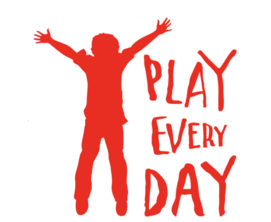Sign up for insights into DHSS's COVID-19 response
Subscribe to DHSS Insights for behind-the-scenes news about Alaska’s COVID-19 response and other efforts to protect the health and well-being of Alaskans.
 Taking care of yourself is worth it
January 3, 2022 – Many of us likely started this week with a plan to feel better in 2022. It’s been a long past couple of years, and all of us are looking for a change.
Move to improve: Making this one change can help so many things feel better
If your goals this year include any of the following, there is one small change you can make that will make a big difference. That change is being physically active. The list of benefits from activity is long, so hold on:
- feel better in all kinds of ways
- sleep better
- reduce stress
- feel less anxious or depressed
- improve your mood
- improve your chances of living not only longer, but with better health in later years
- get stronger
- improve the health of your heart and lungs
- reduce your pain
- improve your brain, including your memory and ability to focus
- improve performance at school, including a link to higher test scores
- prevent falls
- maintain or obtain a healthy weight
- reduce your chances of conditions that can last a long time — like type 2 diabetes, high blood pressure, high cholesterol and some types of cancer
- prevent a serious illness from COVID-19 if you get infected
Moving your body every week can make all of these positive things happen. Looking for more details on the connection between activity and these positive results? Find them in the Physical Activity Guidelines for Americans online.
And don’t think it’s too late to start moving and feeling better.
At age 63, Kevin Armstrong of Anchorage began 2020 with a plan to be more active and eat healthier. Facing higher chances for developing diabetes, he signed up to work with a coach through one of Alaska’s diabetes prevention programs (more on those below). He started doing activities he enjoyed: swimming, golfing, walking, lifting weights. By 2021, he weighed 75 pounds less. He lowered his blood pressure. His blood sugar returned to healthy levels.
“I’m going to change my life for me,” Armstrong said before recording his story to share.
And he did.
“I feel fantastic. I haven’t felt this good in 30 years.”
 Getting the most benefits from activity
The most benefits from activity come when you get enough of it every week. The ideal amount depends on your age. Preschool-age children feel their best when they’re active throughout the day. School-age children see the most benefits when they’re active at least 60 minutes every day. For adults, it’s 150 minutes of moderate to vigorous activity each week. Moderate activity could be walking at a brisk pace or household activities like raking leaves. Vigorous activity steps up the pace to include jogging and running or activities like shoveling snow.
Some benefits of physical activity are immediate. Just one session of activity can cut your current feelings of anxiety, states the physical activity guidelines. Being active can lower your blood pressure that day, improve your memory and ability to stay focused, and help you sleep better that night.

Play your way
For 10 years, Play Every Day has been talking about the value of kids getting out to play every day for the best health. Taking a recess in the middle of the day isn’t just for kids, though. What if you scheduled time on your daily calendar for physical activity like your kids do for PE class?
Great, you say, so just do it! For some, blocking 30 or 60 minutes a day for physical activity is possible, but others might need to fit in shorter breaks. No problem: Active breaks of any length, even a few minutes, add up to feeling better.
Alright, you’re ready to move. Maybe you started the year with a new gym membership. That’s great, but keep in mind a gym might be the right place for some, but it’s not actually needed to feel better.
Physical activity doesn’t have to happen in a gym, in a pool, or on a treadmill to count. Walking is one of the easiest, most accessible and effective activities, in terms of healthy results. Walking is easier on the joints than running and can be done pretty much anywhere. All you need is a pair of shoes, boots or ice cleats and the right kind of outerwear for the weather. If you put your minutes into walking, which is the easiest activity for many of us to actually do, you’ll get the benefits mentioned earlier.
That’s the beauty of making this one change. Physical activity can happen on your own terms when it works best for you. Get your heart pumping and your muscles moving by doing activities you like. Find ways to get as close to 150 minutes a week of movement, because that’s when you’ll start feeling the most benefits. Schedule active time for yourself like you do a meeting. Set up a date with a friend every weekend to catch up and move at the same time. Taking care of yourself is worth it.
It all counts. It all adds up.
|
 Follow along for a Healthier You in 2022
We’re all ready to feel better in some way. Follow along during the next 12 months as the Alaska Department of Health and Social Services shares ways to feel better, body and mind. The department offers and supports many no-cost and low-cost programs that can help. Here is just a sample — all free:
-
Alaska’s Tobacco Quit Line – Ready to quit tobacco or e-cigarettes? You don’t have to do it alone. This service provides a coach to help you quit and free nicotine replacement therapy if needed. Call 1-800-QUIT-NOW or 1-800-784-8669, text READY to 200-400, or visit alaskaquitline.com.
-
Online program to prevent or manage diabetes – Run through Omada, this program is offered to any eligible adult across the state. You can participate from home, whenever it works best for you.
-
Telephone-based program to prevent diabetes – Run through InquisitHealth, this program is offered to eligible adults statewide. You can participate from home, whenever it works best for you.
-
Online program to manage high blood pressure – Also run through Omada, this program is offered to eligible adults across the state.
-
Careline – Need to talk? Call anytime if you need someone to talk to, if you are in a crisis, you are thinking about suicide, or you’re concerned about someone else. The conversation is confidential and you’ll be treated with respect. Call 1-877-266-4357 or text 4help to 839863 from 3 p.m.–11 p.m. Tuesdays through Saturdays. Visit Careline at https://carelinealaska.com.
Now back to physical activity. Here’s one more way for families to be active together.
-
Healthy Futures Challenge – Teachers and families with young kids, get ready for this free physical activity challenge to start Feb. 1, 2022. It’s not too late for teachers and principals to sign up so their schools can participate. The spring challenge will run February through April. Children in grades K–6 at participating schools will win prizes for tracking their activity and getting at least 60 minutes of activity, 15 days each month. Learn about the challenge online.
Feeling better starts with small steps. You can do this, and we can do this, Alaska! The important thing is to just start moving.
Read this blog and others on Play Every Day.
More tips from DHSS Insights
Browse all posts:
|